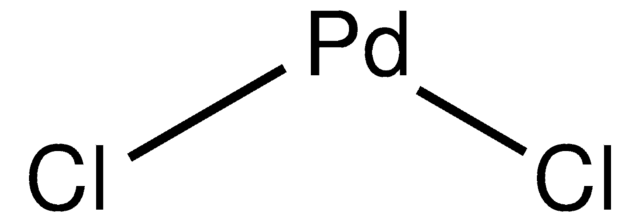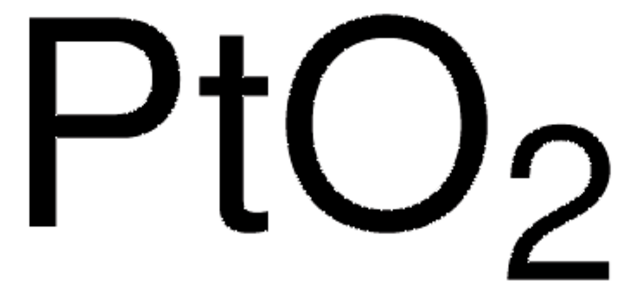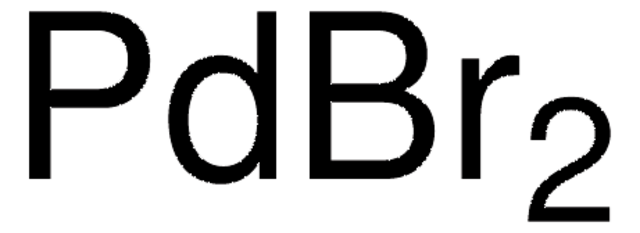520748
Palladium(II)-oxid
99.97% trace metals basis
Synonym(e):
Palladium monoxide, Palladium oxide
About This Item
Empfohlene Produkte
Qualitätsniveau
Assay
99.97% trace metals basis
Form
powder and chunks
Zusammensetzung
Pd, 85-87%
Eignung der Reaktion
reagent type: catalyst
core: palladium
mp (Schmelzpunkt)
870 °C (lit.)
Dichte
8.7 g/mL at 25 °C (lit.)
SMILES String
O=[Pd]
InChI
1S/O.Pd
InChIKey
HBEQXAKJSGXAIQ-UHFFFAOYSA-N
Suchen Sie nach ähnlichen Produkten? Aufrufen Leitfaden zum Produktvergleich
Allgemeine Beschreibung
Anwendung
Signalwort
Danger
H-Sätze
Gefahreneinstufungen
Ox. Sol. 2
Lagerklassenschlüssel
5.1B - Oxidizing hazardous materials
WGK
WGK 3
Flammpunkt (°F)
Not applicable
Flammpunkt (°C)
Not applicable
Persönliche Schutzausrüstung
dust mask type N95 (US), Eyeshields, Gloves
Hier finden Sie alle aktuellen Versionen:
Besitzen Sie dieses Produkt bereits?
In der Dokumentenbibliothek finden Sie die Dokumentation zu den Produkten, die Sie kürzlich erworben haben.
Kunden haben sich ebenfalls angesehen
Unser Team von Wissenschaftlern verfügt über Erfahrung in allen Forschungsbereichen einschließlich Life Science, Materialwissenschaften, chemischer Synthese, Chromatographie, Analytik und vielen mehr..
Setzen Sie sich mit dem technischen Dienst in Verbindung.

![[Pd(OAc)2]3 reagent grade, 98%](/deepweb/assets/sigmaaldrich/product/structures/508/249/99a0ef2c-b77c-4d73-8ed9-0cca05b6b41f/640/99a0ef2c-b77c-4d73-8ed9-0cca05b6b41f.png)








